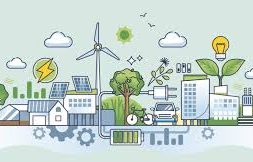
From Liability To Asset: How Managed EV Charging Supports Energy Resilience – EQ Mag
CEO and cofounder of ev.energy, a global provider of electric vehicle (EV) charging software.
Electric vehicles are the most significant change in how we use energy since the beginnings of the energy grid—and for many within the industry, it’s the biggest headache they’ve had to face. With 229 million EVs expected to hit roads by 2030, there’s certainly a challenge ahead.
According to a BNEF study in 2021, which used charging data supplied by my company, EV drivers tend to keep their cars plugged in for around 12 hours each day, which can put a massive strain on our energy grid. However, most vehicles only actually require one to three hours of charging, opening up the opportunity to make sure vehicles are charging at manageable times for the grid without any need for infrastructure upgrades or inconveniencing drivers. By implementing software technologies, the study demonstrates, consumers can shift 90% of demand outside of peak hours to avoid catastrophic events in blackout-prone regions globally, including California and Texas.
For businesses and consumers, this presents a massive opportunity: Managing these “batteries on wheels” creates a virtual power plant over 30 times bigger than the largest power plant in the world today.
How—and why—should we factor EV charging into our daily lives? When EV charging is properly managed, businesses and consumers see the following benefits:
1. Not Letting Renewables Go To Waste
As policymakers double down on net-zero requirements, utilities are turning to renewable energy sources like solar and wind to keep the lights on more cleanly. The drawback? These sources depend on natural cycles, and given volatile energy markets, no country can afford to let renewable capacity go to waste when the sun is shining or the wind is blowing.
Companies are developing software platforms that bridge this gap by integrating with the energy grid to know when green energy is available and begin charging vehicles automatically to soak it up. This harnesses more clean energy than would otherwise have been used by the grid and stores it in EV batteries to reduce waste. Amid the world’s energy crisis, this is more important than ever. Energy leaders need to understand how EVs can help us take advantage of clean energy and wean us off our unsustainable reliance on fossil fuels. This will also reduce energy bills for everyone—not just those with EVs or solar panels—while reliably keeping communities and economies running with clean, secure and locally generated energy.
2. Making Sure We Have Clean Backup Power At All Times
At the same time, capturing these electrons when they’re generated can also mean having clean backup power during times of need. Rather than investing in huge-scale battery packs for billions of dollars and years of research and development, utilities can use EV batteries to create a virtual power plant to store extra green energy.
This technology is already being used in practice by many utilities, with National Grid leveraging EV batteries from their customers in Massachusetts to store renewable energy and paying them in return. In California, SVCE also nudges drivers to charge and store energy on days when it is sunnier or when the grid is less congested.
Realizing the full potential of renewables will require utilities, automakers and software providers to work closely together to build integrations and match renewable generation with EV demand, but this will be critical to getting one step closer to net-zero targets and ditching fossil fuels for good.
3. Keeping The Lights On During Extreme Weather
Preventing energy from being wasted is especially critical in regard to extreme weather events. We saw with Hurricane Ian in September 2022 that vehicle-to-home technology can provide a much-needed safety net. EVs can do much the same through summer heat waves and winter cold snaps—and it all goes back to the flexibility of EV charging.
By charging EVs to capacity before a storm or heat wave hits, backup energy can be used to power a home or give back to the grid when required. The growing range of EVs with vehicle-to-grid capabilities, such as the Ford F-150 Lightning or Hyundai’s IONIQ 5, adds further options for drivers to support the grid and tackle blackouts.
First, utilities, OEMs and software providers must join forces so we can be ready for the new normal of weather conditions.
4. Reinventing The Driver Experience
A clean, secure and reliable energy future powered by EVs starts and ends with drivers. EVs provide them the opportunity not only to get involved hands-on with their energy ecosystem but to save money at the same time.
Imagine being handed a $10 bill every time you filled up with gas. This is the no-brainer that utilities must present to EV drivers, and many utilities like MCE and Avangrid (United Illuminating) are leading on this front, offering enrollment incentives, monthly rewards, rebates and energy savings. (Full disclosure: My company partners with both these utilities for managed EV charging programs.)
We must empower drivers to play a more active role in grid resilience by making EVs a clear and irresistible choice. This will create a snowball effect that continuously encourages managed EV charging as adoption scales. There are ample opportunities for utilities to do so, and we’ll need to see more programs come to life.
Conclusion
As EV demand surges, we have a collective responsibility to redefine the future of energy resilience with solutions that work at every level. First, businesses and consumers must rethink EV charging because when done right, it can be a win-win-win for all.















